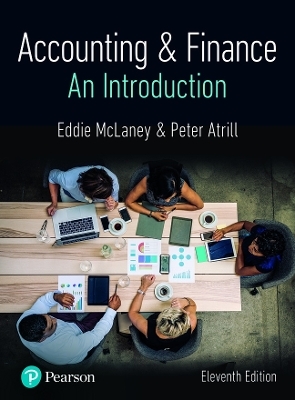
Financial Accounting with MyAccountingLab, Global Edition
Pearson Education Limited
978-1-292-07486-3 (ISBN)
- Keine Verlagsinformationen verfügbar
- Artikel merken
*Personalize learning: MyAccountingLab provides instructors with a rich and flexible set of course materials, along with course-management tools that make it easy to deliver all or a portion of your course online. This package includes MyAccountingLab, an online homework, tutorial, and assessment program designed to work with this text to personalize learning and improve results. With a wide range of interactive, engaging, and assignable activities, students are encouraged to actively learn and retain tough course concepts. MyAccountingLab is not a self-paced technology and should only be purchased when required by an instructor. Please be sure you have the correct ISBN and Course ID. Instructors, contact your Pearson representative for more information.
Chapter 1 Business, Accounting, and You
Business, Accounting, and You
What Is a Business, and Why Study Accounting?
The Definition of a Business 2
The General Concept of Value
Business Owners and Other Stakeholders
The Goal of a Business
How Does a Business Operate?
Resources Needed to Start and Operate a Business
Operating the Business
The Cost of Money
How Are Businesses Organized?
The Types of Businesses
The Legal Forms of Businesses
What Is Accounting, and What Are the Key Accounting
Principles and Concepts?
Generally Accepted Accounting Principles
International Financial Reporting Standards
The Business Entity Principle
The Reliability (Objectivity) Principle
The Cost Principle
Accounting Ethics: A Matter of Trust
What Is the Role of Accounting in a Business?
How Do You Recognize a Business Transaction?
Cash Accounting
Accrual Accounting
How Do You Measure a Business Transaction?
How Do You Record Business Transactions Using the Accounting Equation?
Transaction Analysis
Stockholders’ Equity
How Do You Report Business Transactions Using Financial Statements?
The Income Statement
The Statement of Retained Earnings
The Balance Sheet
The Statement of Cash Flows
Relationships Among the Financial Statements
Accounting, Business, and You—Putting It All Together
Summary
Accounting Practice
Apply Your Knowledge
Know Your Business
Chapter 2 Analyzing and Recording Business Transactions Business, Accounting, and You
How Are Accounts Used to Keep Business Transactions Organized?
Organizing Accounts
Assets
Liabilities
Stockholders Equity
What Is Double-Entry Accounting?
Normal Balance
How Are the General Journal and General Ledger Used to Keep Track of Business Transactions?
Transaction Analysis
Applying Transaction Analysis
Balancing the T-Accounts
How Is a Trial Balance Prepared, and What Is It Used For?
Correcting Errors
Preparation of Financial Statements
Summary
Accounting Practice
Apply Your Knowledge
Know Your Business
Chapter 3 Adjusting and Closing Entries
Business, Accounting, and You
How Does a Company Accurately Report Its Income?
Revenue Recognition and Matching Principles
What Is the Role of Adjusting Entries, and When Are They Prepared?
Accruing Revenues
Accruing Expenses
Adjusting Deferred Revenues
Adjusting Deferred Expenses
How Are Financial Statements Prepared from an Adjusted Trial Balance?
The Adjusted Trial Balance
Preparing the Financial Statements
How Does a Company Prepare for a New Accounting Period?
Completing the Accounting Cycle
The Three Closing Entries: Revenues, Expenses, and Dividends
Post-Closing Trial Balance 120
Summary of the Adjusting and Closing Processes
Summary
Accounting Practice
Apply Your Knowledge
Know Your Business
Comprehensive Problem
Chapter 4 Accounting for a Merchandising Business
Business, Accounting, and You
What Are the Relationships Among Manufacturers, Wholesalers, Retailers, and Customers?
How Do Periodic and Perpetual Inventory Systems Differ?
How Do You Account for the Purchase of Inventory?
Cash and Credit Purchases
Purchase Returns and Allowances
Purchase Discounts
How Do You Account for the Sale of Inventory?
Cash Sales
Credit Sales
Sales Returns and Allowances
Sales Returns
Sales Allowances
Sal
| Erscheint lt. Verlag | 6.11.2014 |
|---|---|
| Verlagsort | Harlow |
| Sprache | englisch |
| Maße | 217 x 273 mm |
| Gewicht | 1651 g |
| Themenwelt | Schulbuch / Wörterbuch |
| Wirtschaft ► Betriebswirtschaft / Management ► Rechnungswesen / Bilanzen | |
| ISBN-10 | 1-292-07486-8 / 1292074868 |
| ISBN-13 | 978-1-292-07486-3 / 9781292074863 |
| Zustand | Neuware |
| Haben Sie eine Frage zum Produkt? |
aus dem Bereich


